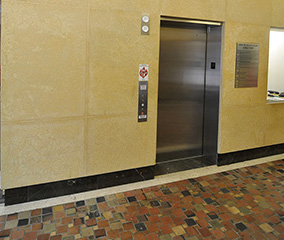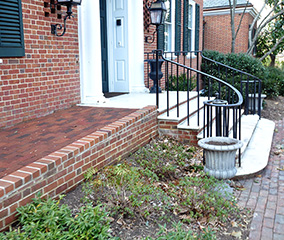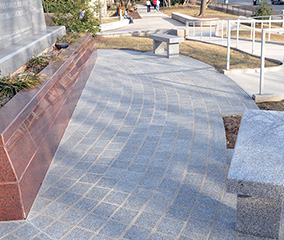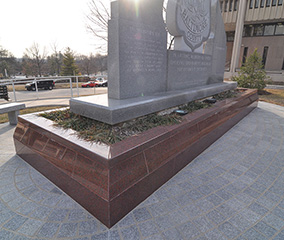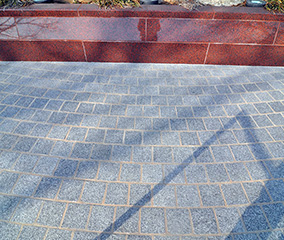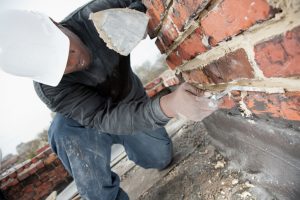
Smoothing the mortar is the most delicate part of the brick repointing process.
When mortar deteriorates it needs to be removed from the joints of a brick wall and replaced with new mortar. This process is called brick repointing. Brick repointing jobs involve four major steps: preparing the joint, mixing the mortar, filling the join with mortar, and finishing the joint.
Step 1: Preparing the Brick for Repointing
Soft, crumbling mortar first needs to be scraped out to an equal depth along the length of the joint. This will ensure that the brick and mortar has enough surface contact and friction for good adhesion. Any deteriorated mortar that’s beyond the ideal depth (½ to ¾ an inch deep) should be removed. The final result should be square corners and flat surfaces at the back of the joint.
Step 2: Mixing the Mortar
Off-the-shelf mixes are typically sufficient for newer brickwork, but repairing damaged mortar in older brickwork may require a custom mortar mix that will match the hardness of the old mortar.
Step 3: Filling the Joint
First the joint is dampened with a water spray onto the surface of the brick. A moist (but not wet) surface helps keep the brick form absorbing the moisture in the mortar before it has fully set. Then, the joint is filled with a series of layers about ⅓ inch thick. Each layer must harden before moving on to the next in order to reduce overall shrinkage, air pockets, and improve water tightness.
Step 4: Finishing the Joint
The final step in the brick repointing process involves a tool called a slicker that’s used to smooth out the mortar joint. What this does is compress the mortar so that the binding agent comes to the surfaces and produces a slick film over top the joint. The join should be smoothed when the mortar is almost, but not fully, dry. If the mortar is smoothed too early it will have a lighter than normal color and may develop hairline cracks. If the mortar is smoothed too late it may develop dark streaks and have suboptimal closure. This is the most precise and delicate part of the process, and it requires a great deal of forethought to properly accomplish.
Brickwork Masonry and Repair from Del Prete Masonry
For all of your questions regarding masonry repair and restoration, feel free to contact Del Prete Masonry. Our masonry restoration professionals have the experience and history of satisfied clients to prove that we’ll get the job done right, and cost-effectively. To get started with your masonry restoration project, please contact our office today at 410-683-0650 or email us at mike@delpretemasonry.com. We serve Baltimore City, County, Harford County, Carroll County, Anne Arundel County, and Howard County.
Keep up with our blog for masonry related information, and follow us on Facebook, Twitter, and Google+! 1
Tags: brick care, brick repointing












